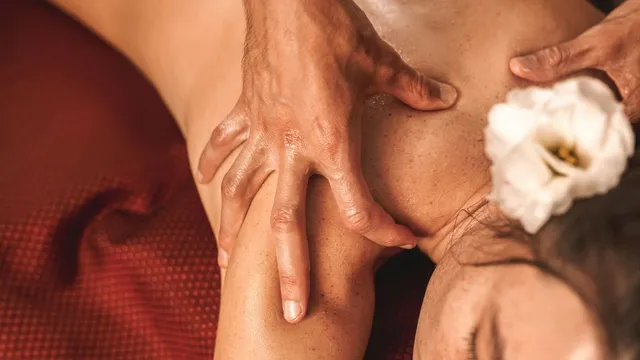- By Bornika Das
- Sat, 02 Aug 2025 08:03 PM (IST)
- Source:JND
As the monsoon clouds roll in and bring much-needed relief from the scorching summer, they also usher in a wave of skincare challenges. The increased humidity, fluctuating temperatures, and damp conditions can wreak havoc on your skin, leading to clogged pores, dullness, irritation, and even fungal infections. While store-bought solutions may offer temporary relief, Ayurveda offers a time-tested ritual that not only addresses these concerns but nurtures your body and mind holistically: Abhyanga, the ancient self-oil massage practice that stands as a shield against seasonal imbalances.
Rooted in centuries of Ayurvedic wisdom, Abhyanga is more than just a skincare routine; it's a therapeutic ritual designed to balance the body’s doshas, especially Vata, which tends to get aggravated during the rainy season. By massaging warm herbal oils into the skin with mindful strokes, Abhyanga deeply hydrates, detoxifies, and soothes inflammation while enhancing circulation and calming the nervous system. In conversation with The Daily Jagran, Dr. Rekha R. Bhatt, Ayurvedic physician at SOUKYA International Holistic Health Centre, shares how this age-old ritual can protect and rejuvenate your skin during the monsoon—and why modern Ayurvedic experts still swear by its powerful, holistic benefits.
Abhyanga: A Monsoon Ritual Rooted In Ancient Wisdom
One of the most powerful Ayurvedic rituals to restore harmony during this time is Abhyanga, the ancient practice of self-oil massage. More than just a cosmetic routine, Abhyanga is a deeply nourishing act of self-care that supports skin health, boosts circulation and calms the mind, all of which are especially beneficial in the monsoon.
ALSO READ: What Are The 5 Ancient Beauty Practices That Can Still Transform Your Skin Today?
How Abhyanga Works
Performed by massaging warm herbal oil into the skin in slow strokes, Abhyanga works by deeply hydrating the tissues while simultaneously flushing out toxins through the lymphatic system. Dr. Rekha R. Bhatt states, “Abhyanga balances the aggravated Vata doshas, thereby reducing the dryness, roughness and improving the smoothness and texture of skin.”
Choosing The Right Oil
Choosing the right oil is key to maximising the benefits of Abhyanga, especially during the monsoon. Sesame oil, with its warming and grounding properties, is particularly effective in balancing Vata and providing deep nourishment. For those with sensitive or acne-prone skin, coconut oil is a better option, thanks to its light texture and natural cooling effect. Meanwhile, oils infused with neem, turmeric, or other antimicrobial herbs are highly recommended to combat the fungal and bacterial concerns that often arise during the humid months.
-1754076815023.jpg)
Abhyanga For Skincare In Monsoon (Image Credits: Canva)
How And When To Practice Abhyanga
The ideal practice is to perform Abhyanga two to three times a week, preferably in the morning. Warm the oil, massage it onto the body with gentle but firm strokes, and allow it to sit for 15–20 minutes before rinsing off with a warm bath. Not only does this soften and rejuvenate the skin, but it also helps alleviate joint stiffness and reduce stress.
ALSO READ: Is This Simple Pink Detox Drink The Secret To Radiant And Glowing Skin?
Reclaiming Balance In The Monsoon
In a season where skin often swings between extremes, Abhyanga offers consistency, care, and a moment of reconnection. It’s a reminder that beauty begins with balance and that ancient wisdom still holds the key to modern-day glow.

